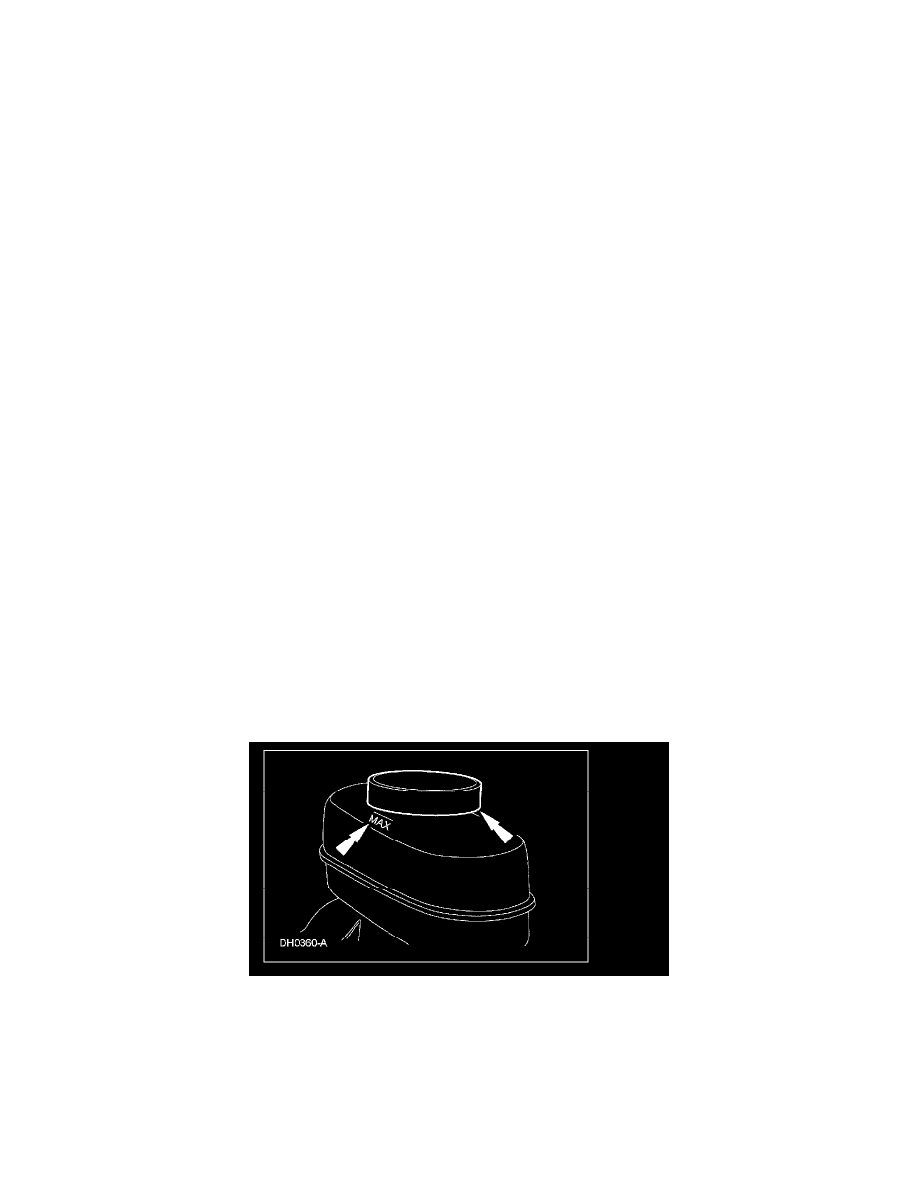Crown Victoria V8-4.6L Flex Fuel (2008)

14. NOTE: If the brake pedal remains spongy, air may be trapped in the HCU.
If the brake pedal remains spongy after pressure bleeding, carry out the ABS Hydraulic Control Unit (HCU) Bleeding procedure with the scan
tool.
15. WARNING: If the vehicle is equipped with a fire suppression system, repower the system. For important safety warnings and
procedures, refer to Fire Suppression System. Failure to follow these instructions may result in serious personal injury.
If equipped with fire suppression system, repower the system.
Manual Bleeding
WARNING: Do not use any fluid other than clean brake fluid meeting manufacturer's specification. Additionally, do not use brake fluid that
has been previously drained. Following these instructions will help prevent system contamination, brake component damage and the risk of
serious personal injury.
WARNING: Carefully read cautionary information on product label. For EMERGENCY MEDICAL INFORMATION seek medical advice.
In the USA or Canada on Ford/Motorcraft products call: 1-800-959-3673. For additional information, consult the product Material Safety
Data Sheet (MSDS) if available. Failure to follow these instructions may result in serious personal injury.
CAUTION: Do not allow the brake master cylinder reservoir to run dry during the bleeding operation. Keep the brake master cylinder
reservoir filled with clean, specified brake fluid. Never reuse the brake fluid that has been drained from the hydraulic system. Damage to the
brake system components may occur.
CAUTION: Brake fluid is harmful to painted and plastic surfaces. If brake fluid is spilled onto a painted or plastic surface, immediately wash
it with water.
NOTE: When any part of the hydraulic system has been disconnected for repair or installation of new components, air can get into the system and
cause spongy brake pedal action. This requires bleeding of the hydraulic system, including the HCU after it has been correctly connected.
NOTE: If the HCU or any component upstream of the HCU are installed new, carry out the brake system bleed procedure first without the scan tool,
followed by the brake system bleed procedure using the scan tool.
All vehicles
1. WARNING: Before servicing a vehicle equipped with a fire suppression system, depower the system by following the procedure in Fire
Suppression System. Failure to follow the instructions may result in serious personal injury.
If equipped with fire suppression system, depower the system.
2. Clean all dirt from and remove the brake master cylinder filler cap and fill the brake master cylinder reservoir with clean, specified brake fluid.
Vehicles not equipped with traction control
3. Place a box-end wrench on the master cylinder bleeder screw. Attach a rubber drain hose to the bleeder screw and submerge the free end of the
hose in a container partially filled with clean, specified brake fluid.
4. Loosen the bleeder screw and leave open until clear, bubble-free brake fluid flows into the container.
^
Tighten the master cylinder bleeder screw to 13 Nm (10 ft. lbs.) and remove the rubber hose.
All vehicles
